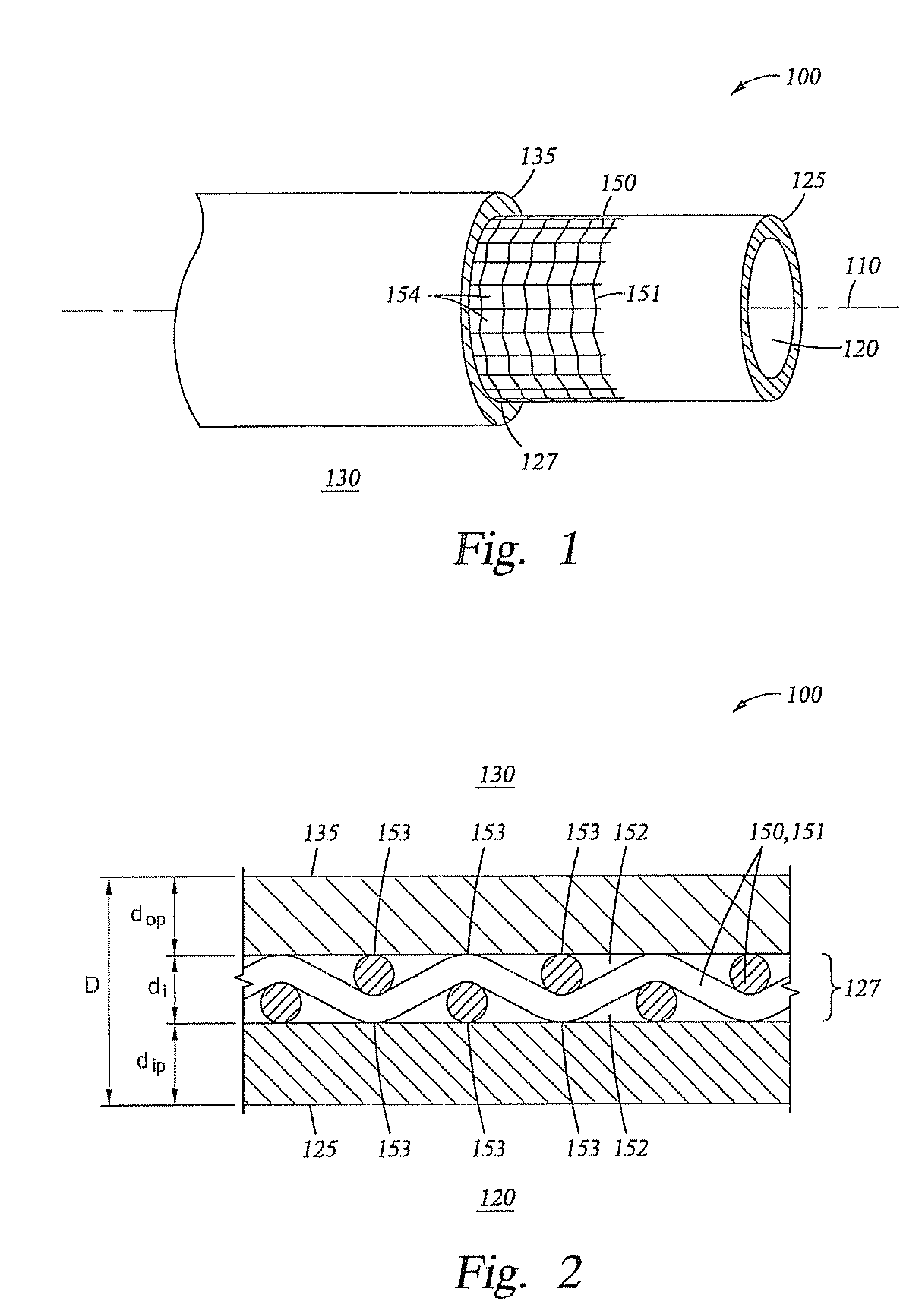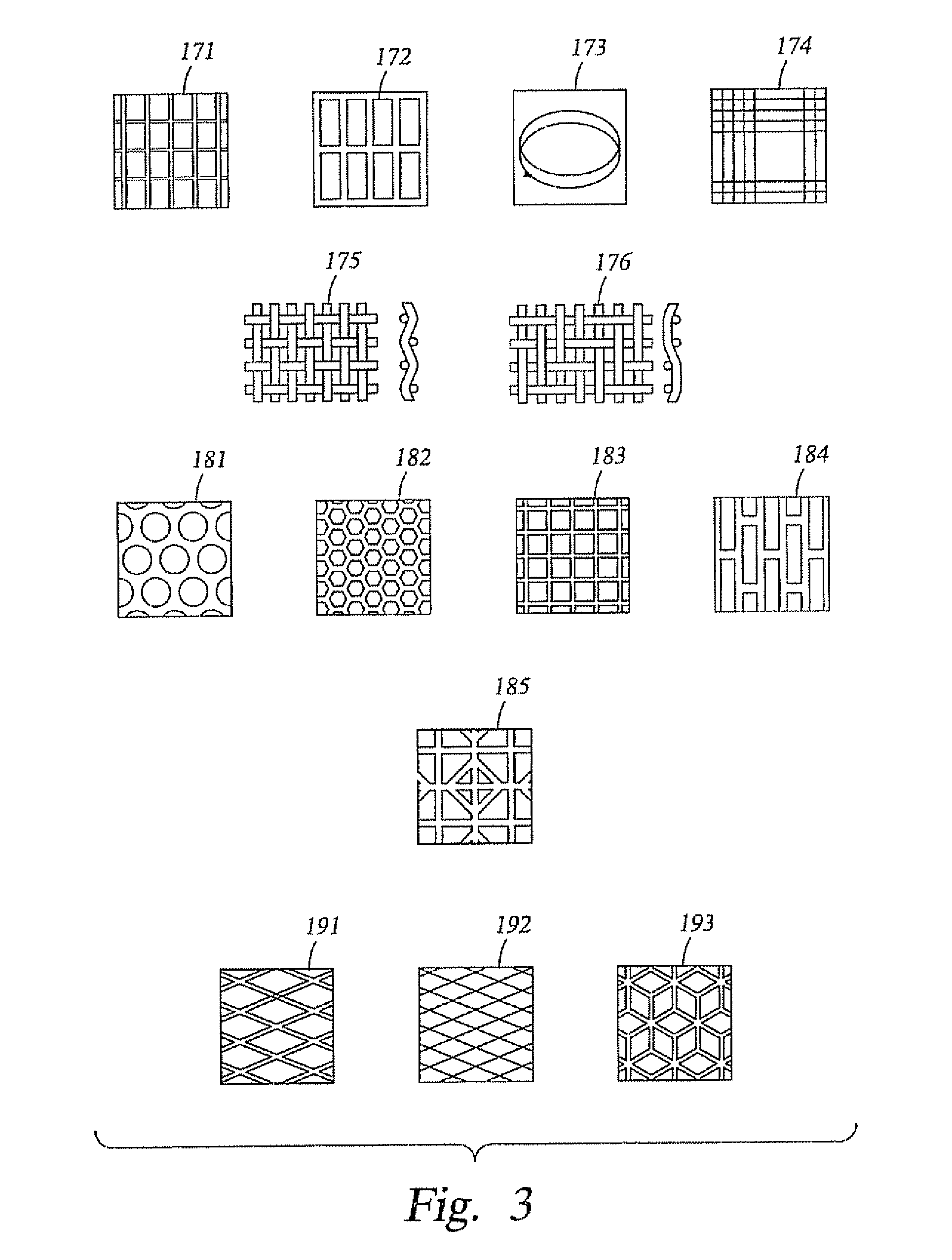Interstitially Insulated Pipes and Connection Technologies
a technology of interstitially insulated pipes and connection technologies, which is applied in the direction of pipes, water mains, service pipes, etc., can solve the problems of time-consuming and labor-intensive use of pigs, increasing the difficulty of transporting well products, and increasing the complexity of well products
- Summary
- Abstract
- Description
- Claims
- Application Information
AI Technical Summary
Benefits of technology
Problems solved by technology
Method used
Image
Examples
example 1
[0104]To quantify the thermal resistance and insulting capabilities of a variety of screen meshes, controlled experiments were conducted. The experimental conditions were appropriate for simulating deepwater pipeline applications. Steel slugs made of the same material as subsea pipes (“X-60 or X-80” pipe or low alloy steel AISI 4130 or API Spec 5cT-P110) were used to represent the subsea pipe walls.
[0105]As illustrated in FIG. 12, each test specimen 940 comprised two flux meters 800 and a screen mesh 151 positioned between the flux meters 800. The flux meters 800 were fabricated from the steel slugs previously described. Each flux meter 800 had a length of about 1.5 in.˜(3.81 cm). Five equally spaced holes 801 were drilled to the center of each steel flux meter 800 in order to affix “T” type thermocouples (not shown). The thermocouples measured the temperature in the flux meter 800 at various distances from screen mesh 151 during testing. Cutouts of screen mesh 151 having a diameter...
example 2
[0116]To quantify the thermal performance of an interstitially insulated tubular, controlled experiments were conducted. The experimental facility was appropriate for simulating deepwater applications.
[0117]Stainless steel 5 mesh, the best screen mesh specimen as experimentally determined in EXAMPLE 1, was tested in an assembly similar to a manufactured pipe. The stainless steel 5 mesh was tested between two samples of P110 4140 steel (same material as subsea pipes). The total thickness of this composite pipe wall was 19 mm (0.75 in). Also, a sample of P110 4140 steel, 19 mm (0.75 in) in thickness, without the screen mesh was tested to compare how the screen mesh affected the overall heat transfer coefficient (hj).
[0118]The TCC system 900 illustrated in FIG. 14 and described above was used to conduct the test runs. The experimental study encompassed the range of interface pressures and temperatures typically experienced by subsea pipelines during normal operations. Also, in certain ...
example 3
[0121]To quantify the thermal performance of an interstitially insulated coaxial pipe, controlled experiments were conducted. The experimental facility was appropriate for simulating deepwater applications. Steel slugs made of the same material as subsea pipes (“X-60 or X-80” pipe or medium-carbon steel P110 4140) were used to represent the subsea pipe walls.
[0122]Referring to FIG. 18, each test specimen 940 comprised two flux meters 800, two inserts 402 between the two flux meters 800, and a separator 150 (e.g., screen mesh) positioned between the two inserts 402. The flux meters 800 were fabricated from the steel slugs. Each flux meter 800 had a length of about 3.81 cm (1.5 in.). Five equally spaced holes 801 were drilled to the center of each steel flux meter 800 in order to affix “T” type thermocouples (not shown). The thermocouples measured the axial temperature distributions in the flux meter 800 during testing. The inserts 402 were machined from P110 4140 steel bar stock into...
PUM
| Property | Measurement | Unit |
|---|---|---|
| heat transfer coefficient | aaaaa | aaaaa |
| heat transfer coefficient | aaaaa | aaaaa |
| heat transfer coefficient | aaaaa | aaaaa |
Abstract
Description
Claims
Application Information
 Login to View More
Login to View More - R&D
- Intellectual Property
- Life Sciences
- Materials
- Tech Scout
- Unparalleled Data Quality
- Higher Quality Content
- 60% Fewer Hallucinations
Browse by: Latest US Patents, China's latest patents, Technical Efficacy Thesaurus, Application Domain, Technology Topic, Popular Technical Reports.
© 2025 PatSnap. All rights reserved.Legal|Privacy policy|Modern Slavery Act Transparency Statement|Sitemap|About US| Contact US: help@patsnap.com



